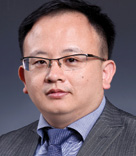Q: What is a utility model patent? What are the application procedures and fees?
A: The Patent Law specifies three types of patents – invention, utility model and design – with utility model being defined as “any new technical solution relating to the shape, the structure, or their combination, of a product, which is fit for practical use”. The Patent Law specifies that a utility model patent, like an invention patent, is required to satisfy the requirements of novelty, inventiveness and industrial applicability, although the bar for inventiveness for a utility model patent is set lower. Correspondingly, the period of protection for a utility model patent is shorter than that for an invention patent, only 10 years.

Cheng Bing
安杰律师事务所
合伙人
Partner
AnJie Law Firm
Generally speaking, an application for a utility model patent may be filed for a product with a definite shape, and the subject matter has to be related to improvements to the form or structure of the product, or the organisation and linkage relationships among the internal component parts of the product. By contrast, subject matter concerning improvements to methods or materials themselves falls outside the scope of a utility model.
As compared to an invention patent, the prosecution period for a utility model patent is much shorter, generally between six and 12 months, and sometimes even less; furthermore, a utility model is not subject to a substantive examination, and the relevant fees are lower than those for an invention patent, rendering such applications a very attractive choice for applicants.
Q: How stable is a utility model patent and how well are they protected?
A: The Patent Law specifies that a utility model patent is only required to undergo a formal examination and an initial examination of whether it has any obvious substantive defects, and is not subject to a substantive examination, as are invention patents. In the past, because the initial examination did not require the examiner to conduct a search, for a long time it existed in name only. However, it should be noted that the State Intellectual Property Office has recently made major revisions to the examination procedure for utility model patents. For example, in February 2013, in the notice for solicitation of public comments on the Draft for Revising the Patent Examination Guidelines (draft for comments), the State Intellectual Property Office expressly proposed that examiners should be permitted to conduct a search for utility model applications, when necessary. In practice, we have also gradually begun to receive “office actions”, questioning the novelty and inventiveness of utility model applications. It is anticipated that the quality of utility model patents will be enhanced quite substantially in the near future.
For a long time, there has been a widely accepted conception that the stability of utility model patents is weak. However, in reality, this may not be true. According to data released by the State Intellectual Property Office, between 2001 and 2011 the overall success rate for people to challenge the validity of utility model patents (including complete and partial invalidations) was approximately 47%. That this percentage is not much higher than for invention patents shows that the stability of utility model patents is not inferior. One of the major factors creating such a state is the Patent Law’s relatively low requirements in respect of the inventiveness of utility model patents. Accordingly, in patent practice, petitioners for invalidation often have no good way of showing that the utility model patent in question fails to satisfy the Patent Law’s inventiveness requirement.

Wu Li
安杰律师事务所
高级顾问
Senior Consultant
AnJie Law Firm
The Patent Law specifies that the holder of a utility model patent is required, in the course of a rights protection process, to secure a utility model patent assessment report issued by the State Intellectual Property Office. Theoretically, such an assessment report can eliminate unsound utility model patents before formal proceedings (e.g. court trials) are initiated, but as the above-mentioned data on the successful rate of invalidations of utility model patents show, such assessment reports may not be able to eliminate the majority of the protection claims of the utility model right holders, thus severely limiting their effect in practice. Furthermore, the calculations of damages for infringement of utility model patents and invention patents specified in the Patent Law are almost the same. Taken together, these result in utility model patent right holders being able to secure protection that is almost equivalent to that for invention patents in rights protection practice.
CHINT v Schneider is a typical example of a utility model patent securing strong protection in China, with the case ultimately settled with Schneider paying the owner of a utility model, CHINT, a record-setting compensation. With the newly emerged trend in adjudicating intellectual property cases after the 18th National Congress of the Communist Party of China, it could be anticipated that damage amounts in patent infringement cases, including those for utility model patents, will substantially increase in the future.
Q: How can a foreign enterprise utilise China’s utility model patent regime to its benefit?
A: For a variety of reasons, foreign enterprises have never been able to turn China’s utility model patent regime to their benefit. According to the State Intellectual Property Office, filings by foreign applicants for utility model patents in China numbered only 4,164 in 2011, an unimpressive number when compared with either the more than 500,000 filings with the State Intellectual Property Office for utility models each year, or the 100,000 filings for invention patents submitted by foreign applicants in China each year.
As mentioned, utility model patents are accorded protection similar to that of invention patents in China, and the filing period is shorter and fees lower. Accordingly, foreign enterprises should promptly revise their filing strategies and increase the percentage of China utility model filings in their patent portfolios in anticipation of effectively using this regime.
Furthermore, the vast number of Chinese utility model patents poses a serious threat to the operation of foreign enterprises in China. According to official statistics, 1.67 million utility model patents were granted in China between 2002 and 2011. However, because of limited translation resources, this huge number of utility model patents have not been satisfactorily included in the commonly used international patent databases. Accordingly, foreign enterprises should, with respect to their operations in China, specially design relevant freedom to operate search strategies.
Cheng Bing is a partner and Wu Li is a senior consultant at AnJie Law Firm
北京市朝阳区建国门外大街甲6号
中环世贸中心D座26层
26/F, Tower D, Central International Trade Center
6A Jianguomenwai Avenue
Chaoyang District, Beijing, China
邮编 Postal code: 100022
电话 Tel: +86 10 8567 5988
传真 Fax: +86 10 8567 5999
www.anjielaw.com
电子信箱 E-mail:
chengbing@anjielaw.com
wuli@anjielaw.com






















